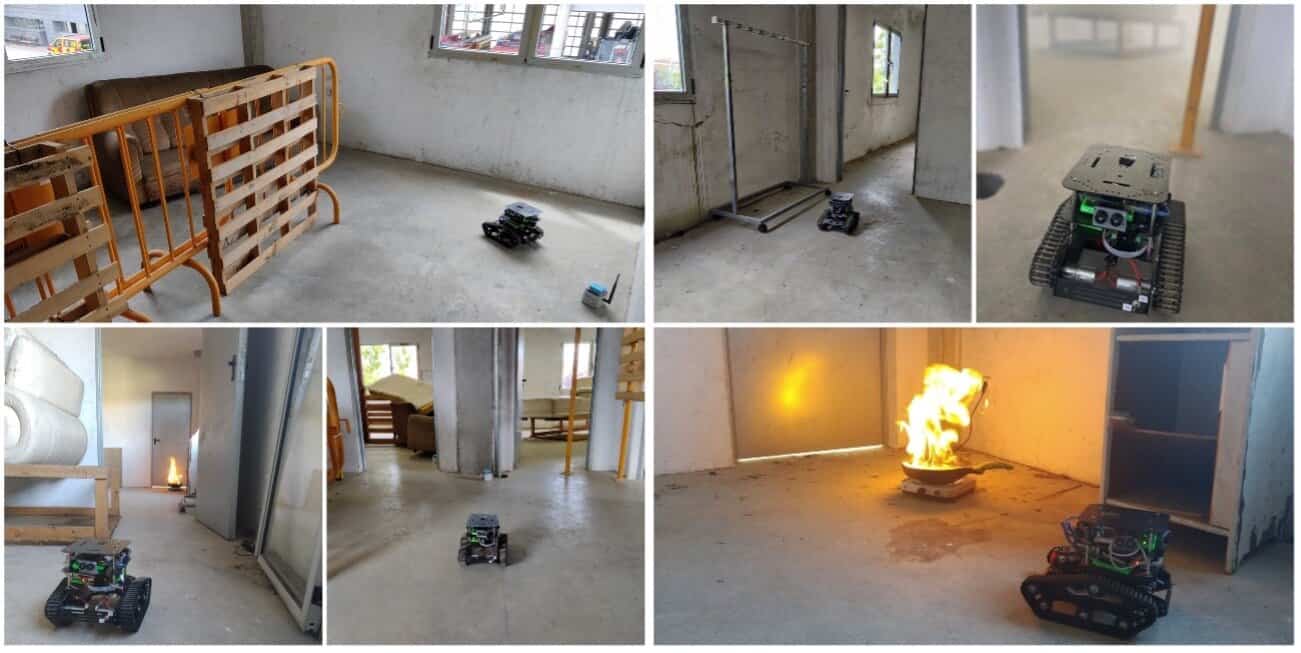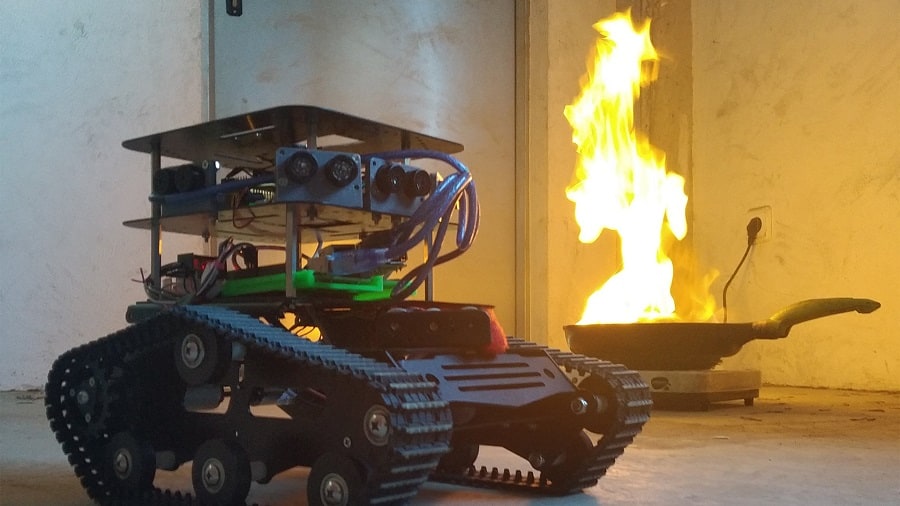A team of Spanish researchers has recently unveiled a mobile robot that could act as the first responder in case of fire emergencies. Generally, when a building catches fire, human firefighters have to put their life at risk and get into the affected space to deal with the problem. The proposed robot can go first instead of the firefighters, analyze the space, and collect information (such as the source of fire, safe entry points, harmful gases, etc.).

Using the data sent by the robot, the firefighters can then come up with a safer and more effective plan to handle the fire emergency. The firefighting robot looks like a mini tank and comes equipped with thermal cameras and numerous sensors to provide real-time information about the air quality, humidity, and temperature of a space. It can be remotely controlled using a smartphone.
“In 2019, 48 firefighters died in the United States due to toxic gases, explosions, burns, or entrapment. A remarkable fact is that 46% of firefighters older than 60 years die due to chronic diseases caused by the lack of information about the air quality in old interventions. These statistics reveal the need for firefighters to know the environment before intervening. This work aims to support firefighters in hostile conditions, limiting their exposure to hazardous environments and helping them be located and guided outside buildings,” the researcher note.
Here is how the firefighter robot works
The robot has been developed as a part of the HelpResponder project, an initiative supported by the Spanish government that plans to reduce the risk faced by first responders in case of emergencies. A team of researchers at Spain’s Rey Juan Carlos University (Universidad Rey Juan Carlos) and The Autonomous University of Madrid (Universidad Autónoma de Madrid) realized the various challenges experienced by firefighters, especially during indoor fire accidents.

They discovered that firefighters often find it difficult to carry out rescue activities in enclosed spaces because; first, there is limited space to move and perform operations, and second, the concentration of harmful gases indoors keeps on increasing if there are not many windows or openings. However, a small mobile robot can easily overcome both challenges.
Unlike human firefighters, the mini tank-like robot can move easily and speedily in a confined space. Also, since the robot doesn’t need to breathe, it does not feel choked in the presence of toxic gases. Moreover, there are three different modes to serve different purposes during fire emergencies.
For instance, in manual mode, a firefighter team can remotely control the movement and actions of the robot to collect information related to the environment and various risk factors during a mission. Using the thermal imagery and data, the team can identify obstacles and sources of fire in a building.
There is also an autonomous mode in which the robot itself explores an indoor environment and sends relevant information to the team about a space. The robot uses its sensors and advanced algorithms to map the affected area to reveal information about the rooms and corridors within the space. Once the robot has collected all the required information, it can then enter evacuation mode to pinpoint safe entry and exit routes.
“Finally, the evacuation mode creates fast and safe routes toward targets. This mode uses the prior knowledge of the scene to compute the shortest path from the current position to the target one. This target position can be the exit of the building or the location of a victim, among other things,” Noelia Fernández Talavera, the first author and a researcher at Rey Juan Carlos University, told Tech Xplore.
What’s more interesting is that the firefighter robot has a customizable design. This means that it can be provided with additional sensors and components to perform specialized functions during a particular mission. So for example, if there is a fire accident in a chemical factory, a rescue team can modify the robot accordingly, without affecting its basic functions.
Testing the firefighter robot’s potential
The researchers tested the robot in both simulated environments and real-world fire accidents. While commenting on the results, the authors said in the paper:
“This system (robot) has been tested and validated in simulated and real environments with fires and cold smoke. (It) shows the versatility of functions, speeds, and movements to adapt to the characteristics of the emergency environment. In addition, the consumption of its elements has been reduced, thus increasing the operating autonomy. Finally, the simulation environment has shown its potential as a tool to plan interventions and train firefighters.”
The study authors even claim that due to its rechargeable lithium-ion batteries and sturdy design, the robot can perform multiple rescue operations in a single day. So in cases of large-scale fire outbreaks, when many teams are required to control the situation at multiple locations, multiple firefighter robots can be used to control the outbreaks.
Unlike human firefighters, the robots won’t get any injuries or feel exhausted, thus increasing the success rate of such operations without putting more human lives at risk. The researchers are now working on making the robot’s navigation system better. Plus, as a part of the HelpResponder project, they are also working on various other technologies such as drones, and beacon systems that could assist and benefit firefighters.
The study is published in the Journal of Field Robotics.






